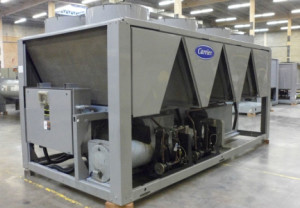 The ideal time to shop for cooling equipment is when you are in winter or just at the end of it, but before the temperature starts climbing. New homeowners in particular have challenges picking a system that is right for their homes because they look at the market as one full of alternatives that can be confusing at times.
The ideal time to shop for cooling equipment is when you are in winter or just at the end of it, but before the temperature starts climbing. New homeowners in particular have challenges picking a system that is right for their homes because they look at the market as one full of alternatives that can be confusing at times.
A reputable HVAC contractor should be able to properly size the HVAC system to be bought and advise the homeowner on the different efficiency options. However the best thing to do as a homeowner is to familiarize with the different types of HVAC equipment available.
Split System AC
The reason they are known as split system is because they are split into indoor and outdoor components. The indoor units has a blower unit and an evaporator coil which help in drawing hear and moisture from the air. The outdoor unit on the other hand is home to the condenser coil which releases the captured heat to the outside environment. It also has a compressor responsible for pumping the refrigerant between the indoor and outdoor component through a copper piping. These systems use the ductwork to deliver conditioned air and are normally paired with a gas furnace which shares the ducting.
Split System Heat pumps
These are dual systems that work as cooling units in summer and heating units in winter. As opposed to the other units, split system heat pumps do not burn fuel to create heat, rather they move thermal energy between the indoor and outdoor space. The common types of split system heat pumps are geothermal and air source.
For the air source units, they cannot draw warmth from the outdoor air during extreme cold temperatures hence a backup heat source is required. Geothermal heat pumps are much more efficient because they draw heat from the ground and keep heating even when the outdoor temperatures become cold.
Ductless Mini-Splits
These are available either as traditional ACs with electric heat or air source heat pumps. They comprise a single outdoor compressor/condenser which is connected to anything between 1 and 4 wall-mounted indoor air handlers via a conduit which contains the power supply, condensate drain and refrigerant tubing. Ductwork isn’t required because each air handler has a blower unit which is designed to cool a single area or room.
Packaged Units
These HVAC systems have a condenser, compressor and evaporator all housed in one unit which is then placed outdoors on the roof or near an exterior wall. The ducting runs into the interior of the home. A packaged unit may house an AC with electric coils, an air source heat pump or a gas furnace that is added for heating purposes.
Before making your purchase, you should ensure that you run as much as possible to avoid post-purchase dissonance and worse still getting an inappropriate system for your home.




